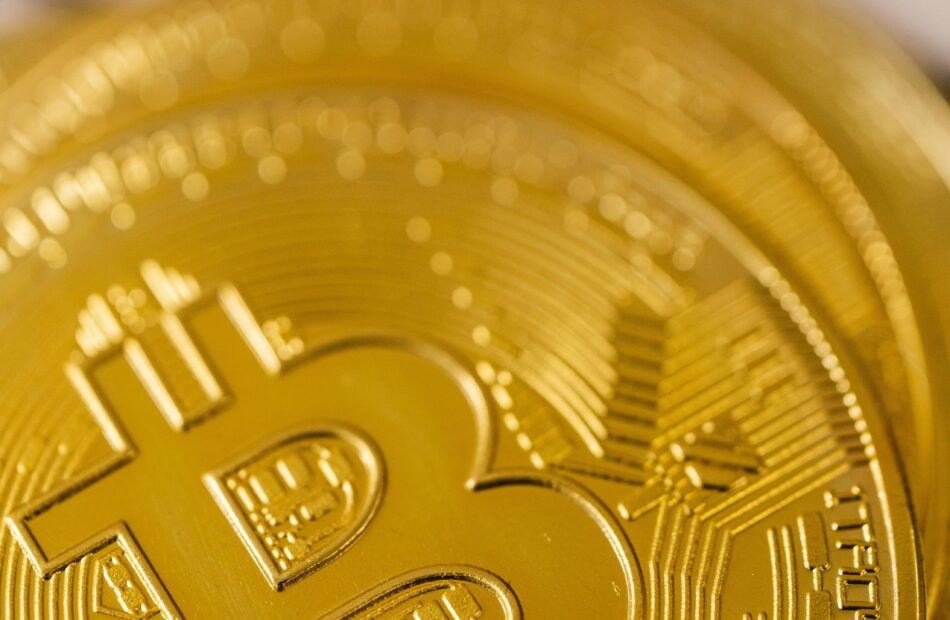Babylon total value locked drops 32% as wallets unstake $1.2B in Bitcoin
Bitcoin staking protocol Babylon saw $1.26 billion in BTC unstaked from its platform, plunging the protocol’s total value locked by 32%. On April 17, blockchain analytics firm Lookonchain flagged several addresses that had unstaked 14,929 Bitcoin (BTC) from the staking platform. The security firm flagged four addresses that unstaked 299 BTC, 499 BTC, 1,000 BTC and 13,129 BTC. One address held a majority of the unstaked assets worth $1.1 billion. With BTC prices hovering at $84,400, the total unstaked BTC is worth about $1.26 billion.The unstaking event saw Babylon’s total value locked (TVL) drop by 32%. According to data tracker DefiLlama, Babylon’s TVL dropped from $3.97 billion to $2.68 billion during the unstaking.Source: LookonchainUnstaked Bitcoin may be “staked back” to Babylon Community members are speculating on who was behind the unstaking. One X user suspected that the Bitcoin may belong to the Chinese government, while another said the move may simply be a rotation, risk-off, or a trader getting liquid.While it’s unclear who’s behind the four addresses cited by Lookonchain, the fund movements could be related to a transition initiated by the decentralized finance (DeFi) protocol Lombard Finance. At the time of the unstaking, Babylon Labs retweeted an announcement from Lombard, saying it was unstaking Bitcoin as part of a transition to a new set of finality providers. Lombard Finance said it timed the unstaking with the end of Babylon’s phase 1 cap 1 on April 24 so users would not miss out on rewards. The protocol said it would stake the assets back. “All of this BTC will be staked back into Babylon as soon as the unbonding is complete,” Lombard Finance wrote. Cointelegraph reached out to Babylon Labs for comments but did not get a response by publication.Related: Bitcoin L2 ’honeymoon phase’ is over, most projects will fail — Muneeb AliBitcoin unstaking follows BABY airdropThe massive unstaking event follows a Babylon airdrop for early adopters. On April 3, Babylon announced the details of its early adopters airdrop program. The airdrop was allocated for its Phase 1 stakers, non-fungible token (NFT) holders, and developers. The protocol allocated 600 million BABY tokens for the airdrop event. Following the airdrop, $21 million in BTC were unstaked from the protocol. Bitlayer co-founder Kevin He previously told Cointelegraph that this was a common short-term market behavior representing early redemption. Babylon is one of the largest Bitcoin DeFi players in the space, with a TVL reaching over $6 billion in December. Babylon co-founder Fisher Yu previously told Cointelegraph that the platform allows staking to be a native use case for Bitcoin, eliminating the need to trust another party while staking. Magazine: Your AI ‘digital twin’ can take meetings and comfort your loved ones
AI tokens, memecoins dominate crypto narratives in Q1 2025: CoinGecko
The cryptocurrency market is still recycling old narratives, with few new trends yet to emerge and replace the dominant themes in the first quarter of 2025.Artificial intelligence tokens and memecoins were the dominant crypto narrative in the first quarter of 2025, accounting for 62.8% of investor interest, according to a quarterly research report by CoinGecko. AI tokens captured 35.7% of global investor interest, overtaking the 27.1% share of memecoins, which remained in second place.Out of the top 20 crypto narratives of the quarter, six were memecoin categories while five were AI-related.AI tokens, memecoins, were leading crypto narratives in Q1 2025: CoinGecko“Seems like we have yet to see another new narrative emerge and we are still following past quarters’ trends,” said Bobby Ong, the co-founder and chief operating officer of CoinGecko, in an April 17 X post. “I guess we are all tired from the same old trends repeating themselves.”Related: Bitcoin still on track for $1.8M in 2035, says analystInterest in memecoins saw a sharp increase ahead of US President Donald Trump’s inauguration on Jan. 20 after his team launched the Official Trump (TRUMP) memecoin on Jan. 18 and the Official Melania (MELANIA) token on Jan. 19 on the Solana network.However, some industry watchers are concerned that memecoins are draining capital from utility tokens, such as Solana (SOL), limiting their price potential.SOL/USDT, 1-day chart. Source: Cointelegraph/TradingViewSOL has fallen by around 48% in the past three months since Trump’s inauguration, when it briefly peaked above $270, TradingView data shows.Related: Ethereum L2 development is ‘double-edged sword’ for ETH valueMemecoins “fell off a cliff” after Libra fiascoThe crypto industry took another hit after the collapse of the Libra (LIBRA) token, a memecoin endorsed by Argentine President Javier Milei, which wiped out $4 billion in market value within hours after insiders allegedly withdrew over $107 million in liquidity, causing a 94% price crash.Libra token crash. Source: Kobeissi LetterMemecoins “fell off a cliff” after the Libra scandal as the number of new tokens deployed on Solana’s Pump.fun saw a drastic fall, the report stated, adding:“Daily tokens deployed has fallen by over 56.3% from its peak in January to 31K at the end of 2025 Q1. The percentage of ‘graduated’ tokens also fell drastically to 0.7%, compared to 1.4% in 2025 January.”Memecoins deployed and graduated on Pump.fun. Source: CoinGeckoWhile the Libra scandal marked the end of the “politicam memecoin” trend, the industry’s most profitable traders are still hunting for speculative memecoin investments despite the end of the memecoin supercycle.“There was the recent meme surge and smart money is always happy to capitulate on that,” Nicolai Sondergaard, a research analyst at Nansen, told Cointelegraph, adding that memecoins may only be a “fun play” for smart investors, as they aren’t affected by the same macroeconomic concerns as Bitcoin (BTC) and Ether (ETH).At the end of March, a savvy trader turned an initial investment of just $2,000 into $43 million with the popular Pepe (PEPE) memecoin, but missed selling the top, locking in a realized profit of over $10 million, despite Pepe’s over 70% decline.Magazine: Memecoin degeneracy is funding groundbreaking anti-aging research
Bitcoin gold copycat move may top $150K as BTC stays 'impressive'
Bitcoin (BTC) has a new gold-inspired $155,000 target, as analysis describes both assets as “remarkably impressive.”In a post on X on April 16, popular trading and analytics account Cryptollica predicted BTC/USD copying gold to hit new all-time highs next.Analysis sees key BTC price similarities to goldBitcoin has made the headlines for its inability to follow in gold’s record-breaking footsteps in 2025.While XAU/USD continues to see repeated record highs, BTC/USD is down 9.3% year-to-date, data from Cointelegraph Markets Pro and TradingView shows.BTC/USD 1-day chart. Source: Cointelegraph/TradingViewDespite calls for an imminent “blow-off top” for gold, Bitcoin bulls hope that after a delay of several months, its “digital” equivalent will follow suit.For Cryptollica, this means BTC/USD breaking out of a consolidatory wedge structure to swiftly reclaim six figures — and more.“Bitcoin midterm target: 155K $,” it told X followers.XAU/USD vs. BTC/USD. Source: Cryptollica/XBTC price performance already has various potential tailwinds at its disposal, all of which have fueled bull runs in the past.As Cointelegraph reported, these include a declining US dollar index (DXY) and all-time highs in the global M2 money supply.Bitcoin “remarkably impressive” during trade warContinuing, onchain analytics firm Glassnode argued that despite the price performance disparity, Bitcoin and gold have weathered the current macroeconomic storm remarkably well.Related: Can 3-month Bitcoin RSI highs counter bearish BTC price ‘seasonality?’“Amidst this turmoil, the performance of hard assets remains remarkably impressive,” it summarized in the latest edition of its regular newsletter, “The Week Onchain,” published on April 16. “Gold continues to surge higher, having reached a new ATH of $3,300, as investors flee to the traditional safe haven asset. Bitcoin sold off to $75k initially alongside risk assets, but has since recovered the weeks gains, trading back up to $85k, now flat since this burst of volatility.”XAU/USD vs. BTC/USD (screenshot). Source: GlassnodeGlassnode said that gold and BTC are “increasingly entering the centre stage as global neutral reserve assets.”In terms of the BTC price drawdown, analysts stressed the fact that by historical standards, the dip versus all-time highs remains modest at around 30%.“In prior macroeconomic events like last week, Bitcoin has typically experienced greater than -50% sell-offs in such events, which highlights a degree of robustness of modern investor sentiment towards the asset during unfavourable conditions,” it wrote, referring to the ongoing US-China trade war.Bitcoin bull market drawdowns (screenshot). Source: GlassnodeThis article does not contain investment advice or recommendations. Every investment and trading move involves risk, and readers should conduct their own research when making a decision.
Russia finance ministry official floats country making own stablecoins: Report
A Russian finance ministry official has reportedly said the country should be developing its own stablecoin after a recent freeze on wallets linked to the sanctioned Russian exchange Garantex by US authorities and stablecoin issuer Tether. Deputy director of Russia’s Finance Ministry’s financial policy department, Osman Kabaloev, said the Kremlin should be exploring the possibility of developing a stablecoin like Tether’s (USDT) to avoid similar actions in the future, according to April 16 reports by Reuters and the state-owned news agency TASS.“We do not impose restrictions on the use of stablecoins within the experimental legal regime. Recent developments have shown that this instrument can pose risks for us,” Kabaloev told TASS.“This leads us to consider the need to develop internal instruments akin to USDT, potentially pegged to other currencies.”On March 6, the US Department of Justice collaborated with authorities in Germany and Finland to freeze domains associated with Garantex, which authorities claimed processed over $96 billion worth of criminal proceeds since launching in 2019.Stablecoin operator Tether also froze $27 million worth of its stablecoin on March 6, forcing Garantex to halt all operations, including withdrawals.The US Treasury’s Office of Foreign Assets Control first hit Garantex with sanctions in April 2022 over alleged money laundering violations.Russian crypto exchange Garantex had to halt withdrawals after Tether Froze $27 million of its USDT. Source: US Department of JusticeGarantex has allegedly resurfaced under a new name after reportedly laundering millions in ruble-backed stablecoins and transferring them to a newly established exchange, a Swiss blockchain analytics firm has claimed.Russia already making crypto moves Meanwhile, Evgeny Masharov, a member of the Russian Civic Chamber, proposed on March 20 to create a Russian government crypto fund that would include assets confiscated from criminal proceedings.Related: $1T stablecoin supply could drive next crypto rally — CoinFund’s PakmanAt the same time, other officials were progressing with new legislation on recognizing crypto as property for the purposes of criminal procedure legislation.The whole stablecoin market capitalization has grown since mid-2023, surpassing $200 billion in early 2025. A joint report from onchain analysis platforms Artemis and Dune, meanwhile, showed that active stablecoin wallets increased by over 50% in one year. Stablecoins also saw massive adoption in 2024, driven by the increased use of bots, with total stablecoin volumes reaching $27.6 trillion, surpassing the combined volumes of Visa and Mastercard by 7.7%. Magazine: DeFi will rise again after memecoins die down: Sasha Ivanov, X Hall of Flame
Raydium debuts LaunchLab to rival memecoin maker Pump.fun
The firm behind the Solana-based automated market maker (AMM) Raydium has launched its memecoin-making protocol, LaunchLab, which looks to compete with Pump.fun.The arrival of LaunchLab on April 16 comes a month after Pump.fun, previously a key contributor to Raydium’s revenue, severed ties with the firm by moving its token migration from Raydium’s liquidity pools to its own new decentralized exchange, PumpSwap.LaunchLab will leverage Raydium’s liquidity pools and aim to dethrone Pump.fun as the leading Solana memecoin launchpad.Raydium said LaunchLab provides memecoin enthusiasts with customizable bonding curves and no migration fees, while tokens that raise 85 Solana (SOL) — currently worth $11,150 — will transition to Raydium’s AMM instantly.Around 10 LaunchLab tokens have already surpassed this threshold, according to the LaunchLab platform.Raydium said tokens can be launched for free and creators can opt-in to earn 10% of trading fees from the AMM pool post-graduation.Source: RaydiumLaunchLab trading fees are set at 1%, and 25% of those fees will be used for Raydium (RAY) buybacks.Related: Trump’s next crypto play will be Monopoly-style game — ReportThe news triggered a near 14% price surge of the RAY token, pushing it up to $2.41 four hours after the announcement before falling back to $2.21 at the time of writing, CoinGecko data shows.PumpSwap volume on a tearPumpSwap’s daily record in trading volume has now been broken five days in a row after posting $460 million on April 17.The April 17 tally narrowly edged out the $454.9 million in trading volume seen on April 16, making it the fourth consecutive day above $400 million.Daily change in trading volume on PumpSwap since March 22. Source: DefiLlamaPumpSwap has now processed $7.3 billion worth of volume since it launched on March 22, DefiLlama data shows.Magazine: Memecoin degeneracy is funding groundbreaking anti-aging research
Ethereum fees drop to a 5-year low as transaction volumes lull
Transaction costs on the Ethereum network have dropped to the lowest level in five years as the amount of activity on the blockchain is in a lull, according to the onchain analytics platform Santiment.Ethereum network fees are now around $0.168 per transaction and the reduction in fees coincides with fewer people sending Ether (ETH) and interacting with smart contracts, Santiment marketing director Brian Quinlivan said in an April 17 blog post.“When many people are using Ethereum, users bid higher fees to get their transactions confirmed faster This drives the average costs up,” Quinlivan said.“When fewer people are transacting, like we see now, users don’t need to bid much. As a result, the average fee drops,” he explained. “It’s essentially a supply and demand system.”Source: SantimentQuinlivan said that, from a trading perspective, low fees can preclude a price rebound, Still, he added that traders appear to be patiently waiting for the global economic uncertainty to pass before scaling up their usual frequency of Ether and altcoin transactions.Traditional and crypto markets tanked after US President Trump’s sweeping tariffs were announced on April 2. Many assets haven’t recovered to the same level as before their unveiling, despite tariff exemptions and a 90-day pause for most countries.ETH has fallen over 12.5% in the past 14 days and has traded flat over the past 24 hours, hovering just under $1,600, according to CoinGecko.“We can visibly see the increased sensitivity toward Ethereum discussions and tariff/economy news as prices have really threatened long-time support levels,” Quinlivan said.“The more the retail community leans away from an asset, especially one with still thriving development, the higher the likelihood of an eventual surprise rebound with little resistance,” he added. Pectra upgrade on the wayAfter delays due to configuration issues and an unknown attacker causing headaches during the Holesky and Sepolia testnet activations, the Pectra upgrade for the Ethereum network is now scheduled to go live on the mainnet on May 7.Phase one is expected to double the layer-2 blob capacity from three to six, reduce transaction fees and network congestion and allow fees to be paid in stablecoins like USDC (USDC) and DAI (DAI).Related: Ethereum devs prepare final Pectra test before mainnet launchThe maximum staking limit will also be increased from 32 ETH to 2,048 ETH.The second phase of Pectra is expected in late 2025 or early 2026 and will introduce a new data structure to enhance data storage efficiency and a system that improves scalability by enabling nodes to verify transaction data without storing the entire data set.The Pectra fork follows the network’s Dencun upgrade in March 2024, which slashed transaction fees for layer-2 networks and improved the economics of Ethereum rollups.Magazine: What are native rollups? Full guide to Ethereum’s latest innovation
US court pauses state AGs' suit against SEC after agency’s leadership change
A US federal judge agreed to pause a lawsuit filed by 18 state attorney generals and the crypto lobby group DeFi Education Fund against the Securities and Exchange Commission after all parties said new SEC leadership could make the action moot.Kentucky District Court Judge Gregory Van Tatenhove ordered a 60-day stay on the case on April 16, noting a mid-March filing from the SEC that “this case could potentially be resolved” due to a leadership transition at the regulator.He added that the parties must file a joint status report within 30 days.Paul Atkins, a Wall Street adviser who has held board positions with crypto advocacy groups, was sworn in as the new SEC chair earlier this month, replacing acting chair Mark Uyeda and taking over from Gary Gensler.The 18 attorney generals, all hailing from Republican states, filed the lawsuit with the DeFi Education Fund against the securities regulator in November, alleging that the SEC exceeded its authority when targeting crypto exchanges with lawsuits, accusing the regulator and then-chair Gensler of “gross government overreach.” The plaintiffs included attorney generals from Nebraska, Tennessee, Wyoming, Kentucky, West Virginia, Iowa, Texas, Mississippi, Ohio, Montana, Indiana, Oklahoma and Florida, among others.“Without Congressional authorization, the SEC has sought to unilaterally wrest regulatory authority away from the States through an ongoing series of enforcement actions,” the lawsuit stated. Screenshot from filing ordering pause of proceedings. Source: CourtListenerDeFi groups drop case against IRS over killed broker ruleMeanwhile, the DeFi Education Fund, Blockchain Association, and Texas Blockchain Council dropped their lawsuit against the Internal Revenue Service on April 16. “The parties hereby stipulate to voluntary dismissal of this action without prejudice because the case has become moot,” stated the filing. The lawsuit, filed in December, argued that the so-called IRS DeFi broker rule went beyond the agency’s authority and was unconstitutional.Related: NY attorney general urges Congress to keep pensions crypto-free — ‘No intrinsic value’On April 11, President Donald Trump signed a bill to revoke the rule that would have required DeFi protocols to report transactions to the IRS.It comes as the SEC has paused or dropped several high-profile lawsuits against crypto companies this year under its new leadership.Magazine: Illegal arcade disguised as … a fake Bitcoin mine? Soldier scams in China: Asia Express
Bitcoin online chatter flips bullish as price chops at $85K: Santiment
The tone of Bitcoin-related social media posts has flipped to bullish according to crypto analytics platform Santiment, despite Bitcoin continuing to swing around $85,000.“Traders are showing optimism that BTC can regain $90K, which will likely be dependent on tariff and global economy news as the week progresses,” Santiment said in an April 16 X post. The last time Bitcoin (BTC) traded above $90,000 was March 6.Traders regaining confidence in BitcoinSantiment’s social media tracker, which measures how social media users feel about crypto based on the tone of their posts, moved into “bullish territory” on April 16 with a score of 1.973. Before that it was neutral, with a score below 1.606, as social media users were unsure about where Bitcoin’s price was headed as it “has been repeatedly crossing above and below $85K,” Santiment added.Bitcoin tapped as high as $86,000 on April 15 before retracing down to $83,000 the following day. Bitcoin is trading at $84,390 at the time of publication, according to CoinMarketCap.Bitcoin is up 2.73% over the past seven days. Source: CoinMarketCapIf Bitcoin reclaims the $85,000 price level, approximately $254 million in short positions will be at risk of liquidation, according to CoinGlass.In the past 24 hours, several popular crypto accounts on X have shared bullish comments on Bitcoin. Samson Mow’s firm Jan3 said that Bitcoin hitting $500,000 “isn’t crazy.”Crypto trader “Ted” said, “Global money supply is going up, and eventually, this liquidity will go into Bitcoin. Just wait and watch.” Meanwhile crypto trader Titan of Crypto said that “according to Dow Theory, BTC remains in an uptrend, consistently printing higher highs and higher lows.”Related: Bitcoin’s wide price range to continue, no longer a ’long only’ bet — AnalystOther crypto sentiment trackers are not flashing as bullish, however. The Crypto Fear & Greed Index, which measures overall market sentiment, reads a “Fear” score of 30 out of 100.It comes after the crypto market posted its weakest first quarter performance in years. Bitcoin and Ether (ETH), the two largest cryptocurrencies by market capitalization, saw price declines of 11.82% and 45.41%, respectively, over Q1 2025 — a quarter that has historically seen strong results for both assets. Magazine: Your AI’ digital twin’ can take meetings and comfort your loved onesThis article does not contain investment advice or recommendations. Every investment and trading move involves risk, and readers should conduct their own research when making a decision.








